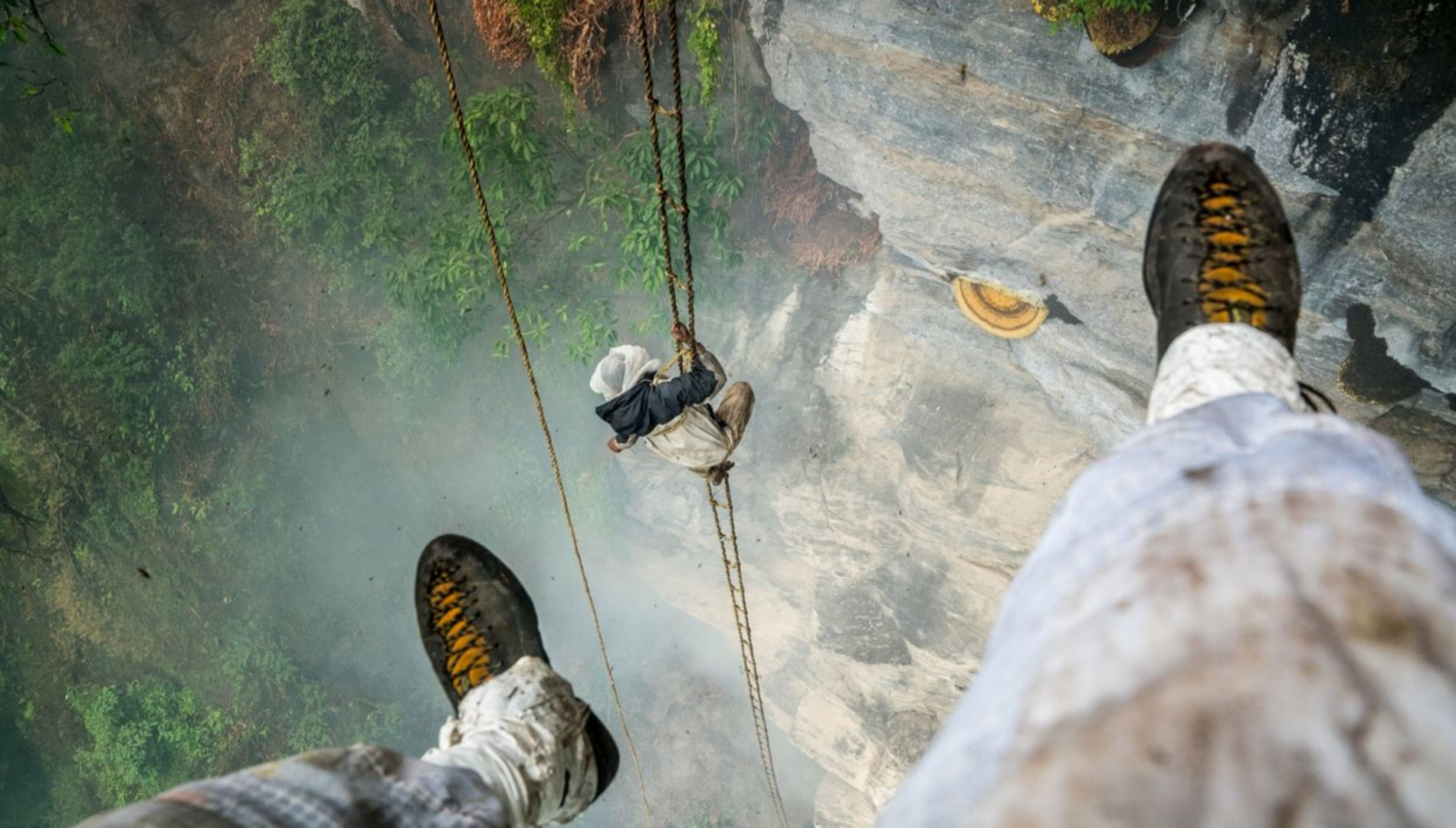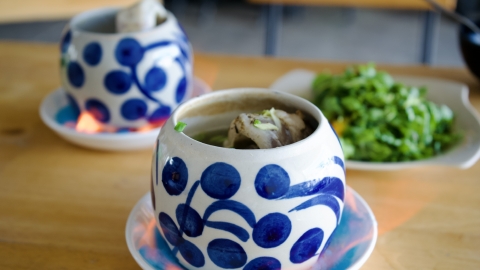In the shadow of the majestic Himalayan mountains, honey extraction from giant rock beehives (Apis Laboriosa) has become part of Nepal's culture and tradition.
The profession of collecting "liquid gold" in Nepal
Amid the towering mountains of the Himalayas, thousands of years later, Gurung men have been making a living by hanging in the air to hunt for rare wild honey.
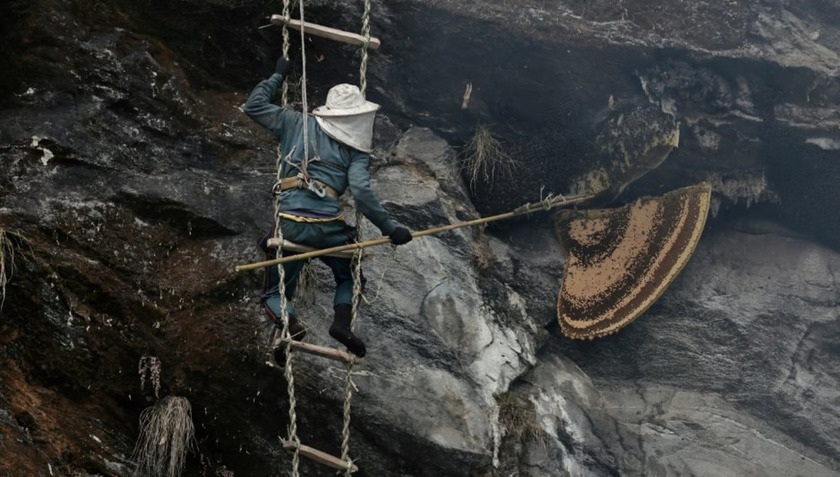
On the steep cliffs of the Himalayas, rock bee hunter Gurung creates a dramatic performance between man and nature.
Collecting honey from cliffs is an ancient tradition in the foothills of the Himalayas. Men of the Gurung ethnic group, who live in the hills of central Nepal and northern India, risk their lives to make a living by doing this adventurous job. Honey-collecting trips usually take place twice a year in the fall and spring. This is associated with the people here as an important part of Nepalese culture.
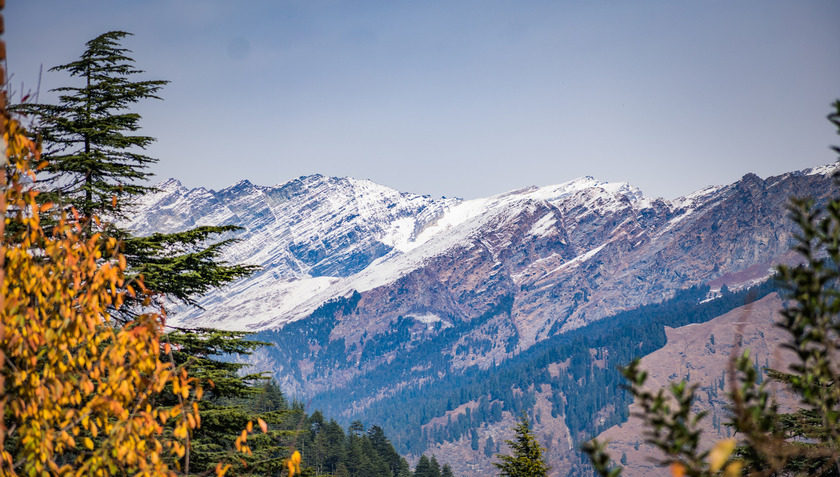
The towering mountain is the workplace of humans
They followed winding trails, climbing steep cliffs to reach towering cliffs, home to giant rock bee nests - Apis Laboriosa, the largest bee species in Asia. These nests, forming giant black spots on the Himalayan screen, are hidden on cliffs at altitudes of more than 1,500 m above the ground, a living proof of life clinging to the harshest lands.

The practice of collecting honey from giant rock beehives (Apis Laboriosa) has become part of the culture
On the steep cliffs, where the wind and snow blow all year round and the cold cuts through the flesh, the Gurung bee hunters have chosen a life full of challenges. Every step on the precarious cliff is a confrontation with death. The lack of oxygen at high altitudes, sudden gusts of wind, and the risk of slipping and falling into the abyss always lurk. However, with a strong survival instinct and extraordinary courage, they have turned the dangers into motivation to conquer nature.
The Challenge of Honey Hunting
During their “hunting” trips, the workers would silently pray to the gods for protection and blessings for a successful trip. The dawn light dyed the snow-capped peaks golden, signaling the start of a new working day. Gurung the bee hunter skillfully tied the rope ladder to a solid rock, then began the adventurous climb. Every step required intense concentration, as even the slightest mistake could lead to unpredictable consequences. Once they reached the hive, they gently set the hive on fire, then used a bamboo knife to meticulously cut the golden honeycombs.
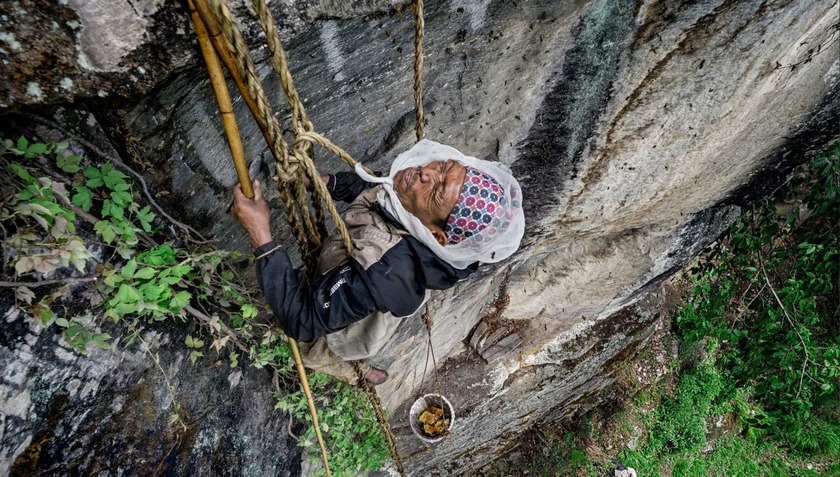
Nepal is home to the world's largest honeybee population and honey harvesting is an important part of the culture of the small South African nation.
With tangos - long bamboo sticks with sickles attached to the end, Gurung bee hunters are like brave warriors, ready to face difficult challenges. Each time they stab straight into the beehive, it is a confrontation with thousands of ferocious bees. Their arms must be very steady to control the tangos, the sickle must be inserted deep into the beehive without breaking the hive. Each movement requires high concentration and extensive experience, because even the slightest mistake can cost them painful stings or even endanger their lives.

In Nepal, people have been collecting honey for thousands of years and the practice is an important element of Nepalese culture.
To avoid being attacked by bees, honey collectors wear special clothes to protect themselves from the bees' wrath. However, some honey collectors still wear normal clothes to "practice their job".
However, with the techniques and deep understanding of bee behavior that generations of Gurung people have accumulated, they are able to do the job safely. This is not only a manifestation of courage and survival skills but also a part of cultural heritage, a traditional art that they always want to preserve and promote.
It takes honey hunters 2-3 hours to harvest a hive, depending on its location and size. Experienced honey hunters will never collect all the honey from one location to ensure the bees can return the following season. Himalayan honey is a valuable export commodity because of its high medicinal value and is often sought after.
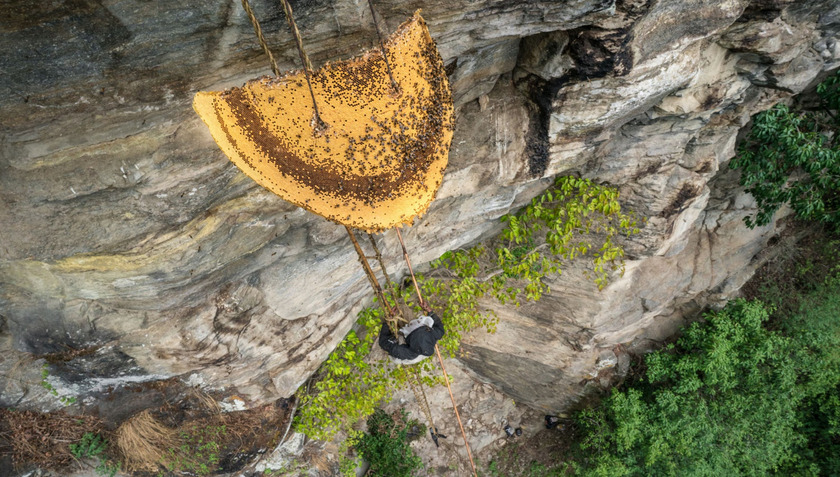
A part of the people in rural Nepal live only by collecting honey.
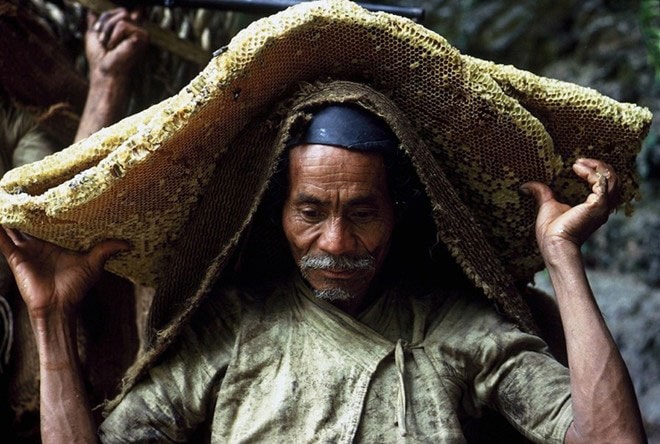
Honey hunters often gather in groups and head up the Himalayas to find beehives.
Today, this rare honey is sold for 20-30 USD/liter. Honey workers reveal that the price of honey on the international market will be much higher. Accordingly, Himalayan wild honey sold in the Asian market is 6 times higher than the common honey in Nepal, about 50-80 USD for half a kilo. This price makes many people risk their lives climbing high to harvest.
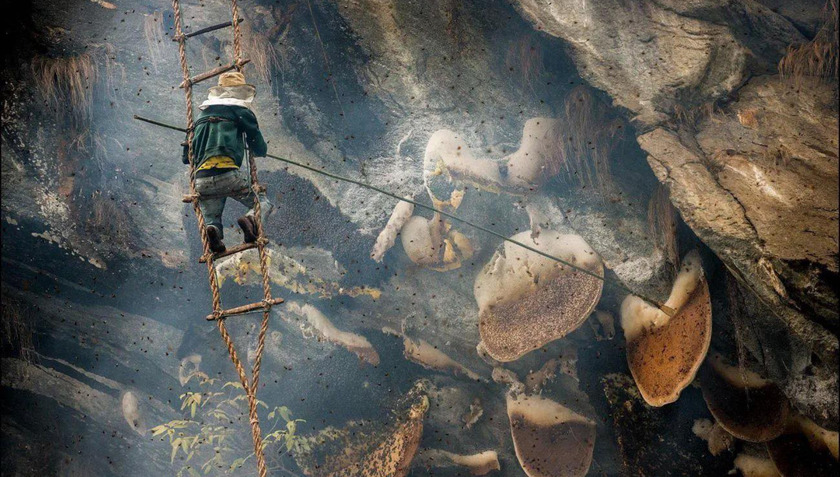
Before climbing the cliff to collect honey, hunters always pray and offer rice, flowers, and fruits.
Recently, the Nepalese government has invested heavily in tourism, allowing tourists to directly follow local people to hunt for honey bees. This helps some people not to depend on natural food sources and helps improve the lives of local people.
However, this promotion of tourism has put honeybees at risk of a high decline in numbers because of the great impact on their habitat. Accordingly, some hunters are tempted by immediate benefits and are willing to take tourists to hunt bees even when it is not honey harvesting season. They cause a serious decline in bee numbers due to lack of food.





